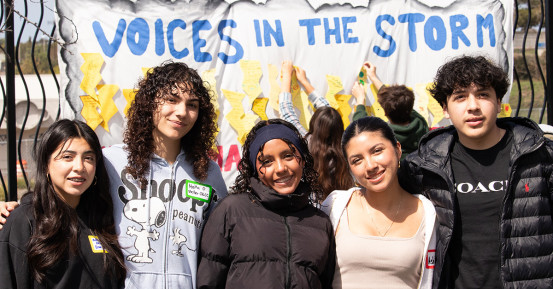Athletic Director Chats About the Tritons’ Move to Division I
UC San Diego Magazine asked Athletic Director Earl Edwards about the pandemic, scholar-athletes and the future.
Published Date
Story by:
Share This:
Article Content
This article originally appeared in the spring 2024 issue of UC San Diego Magazine as “Our Time to Shine.”
For more than 30 years, Earl Edwards has been a fixture at UC San Diego. Part champion, part cheerleader, he’s the Tritons’ No. 1 fan, and you’ll often find him in the crowd or on the sidelines. His career at UC San Diego started in 1986 as associate athletic director for six years before leaving the university to become the athletic director at his alma mater, East Stroudsburg University in Pennsylvania. He returned to UC San Diego in 2000 as the director of athletics, replacing his former supervisor Judy Sweet, and has been on campus ever since. A scholar-athlete himself, Edwards played basketball (point guard) at Staten Island Community College and then at East Stroudsburg.
With the tenacity of an athlete, he thoughtfully stewarded UC San Diego’s move from Division II to Division I in 2020. As we approach the end of the required four-year reclassification period (more on that later), we asked Edwards about the impact of the pandemic, the impressive nature of our scholar-athletes, and what this all means for UC San Diego going forward.
Tell me about the Big West. Was this always our goal?
The Big West was our goal for two reasons: It is a nonfootball conference and 10 out of the 11 schools are in California so it was the right fit for us geographically. Additionally, almost half of the schools in the conference are also University of California schools.
What was it like to enter Division I during the pandemic? What did you learn from this?
When things were basically shut down, we wholeheartedly supported NCAA recommendations, such as competing without fans in attendance and regularly testing athletes, so we could compete. But it was crazy. There were times when we were going to play, but then we didn’t have enough athletes because they had COVID-19. It was challenging across the board.
During the pandemic, we didn’t focus as much on wins and losses because a number of games just weren’t played — and that was true throughout the conference. But in the last two seasons (last year and this year), our record has been more of a focus because there’s been a regular schedule. Fortunately for us, we have been doing quite well.
What did you learn about yourself as an athletic director during the pandemic?
"Equity, diversity, inclusion and creating a sense of belonging, to me, is the most rewarding and important part of what I do. It means that everybody feels that they’re welcome on campus."
One of our core values is resilience. And clearly, during that time period, we were tested quite a bit. I think the experience united us. There were a lot of growing pains that took place during that time that were positive and helped us with the future. For example, we implemented several programs that amplify the voices of scholar-athletes to ensure they have a positive experience.
What is the impact of Division I sports at UC San Diego?
Our scholar-athletes are ambassadors for the university. For their fellow students, I think the move to DI will mean a lot. For a campus like ours, with eight colleges, each with a different focus and theme, there are a lot of distinct and separate experiences. I believe Division I Athletics will unify the campus and inspire more blue and gold school spirit for the university as a whole.
Athletics is a community builder. We’re getting the word out about UC San Diego, sharing our sporting competitions — locally, regionally and nationally — through our partnership with ESPN. Alumni are coming together across the country to watch these games and cheer for the Tritons. And we are also connecting more with others in the San Diego community who attend and watch our competitions.
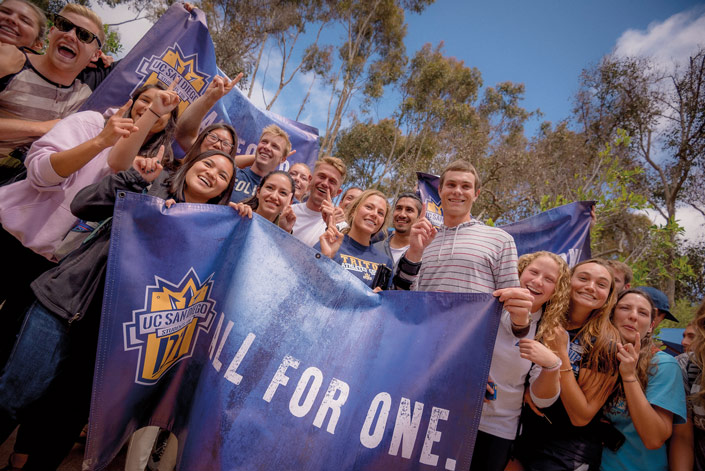
Can you explain the Division I probationary, or reclassification, period?
When you move from Division II to Division I, there’s a four-year reclassification period. While you can compete as a Division I program during those four years, you’re not eligible for NCAA championships. The rationale behind the four years is that it gives your program time to become an effective competitor at a higher level of play and to ensure the resources provided to scholar-athletes are of a Division I standard.
Starting next fall 2024, if we compete well and win conference championships, then we’re eligible to move on to the NCAA championships. Using basketball as an example, if we were to win The Big West basketball tournament, then we would go on to March Madness and participate in postseason competition.
What is your relationship like with our scholar-athletes? What values do you want to instill in them?
We’re a Triton family. We want to create a sense of belonging. We emphasize our core values: the pursuit of excellence, innovation, resilience and inclusion.
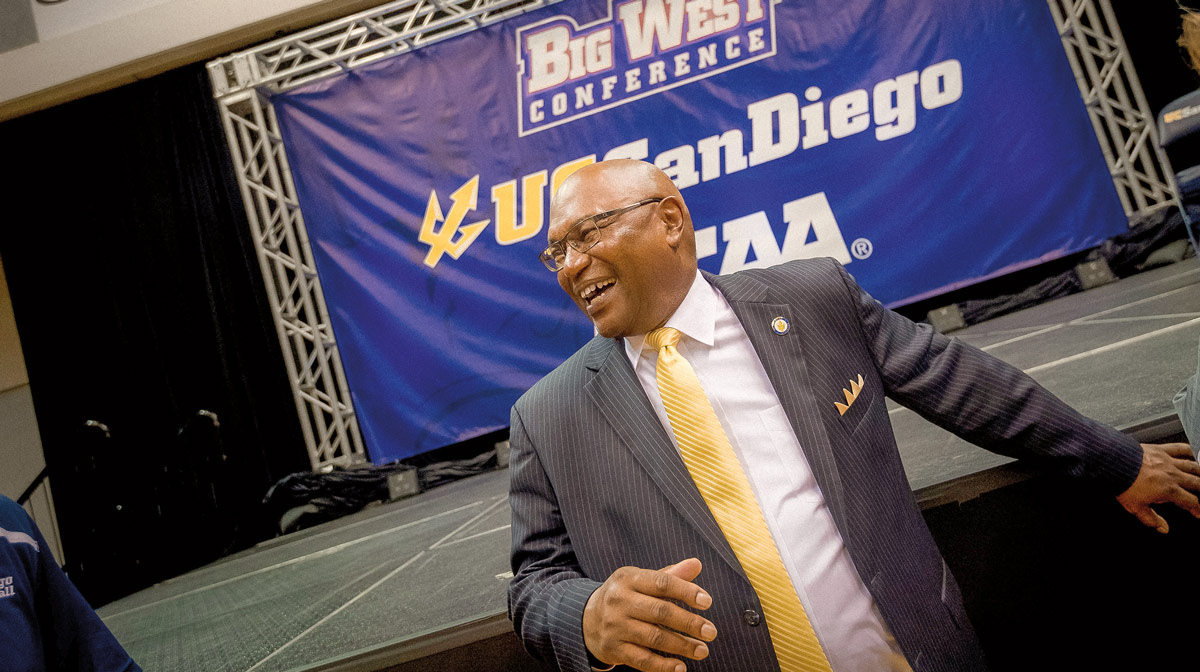
Our scholar-athletes are phenomenal, incredible individuals, which is why we use the term “scholar” rather than the typical term “student” as you see normally. They do well in the classroom. The average GPA of our scholar-athletes is 3.38, which compares to a 3.32 for the general student population. And that success is on top of the amount of time and dedication they have to be engaged in athletics — somewhere between 20 hours a week and sometimes more if you factor in travel. And adding to that, many of our athletes also have jobs, and many are also involved in community service projects. So when you put all those things together, in my mind, these individuals are phenomenal, with all the responsibilities they have. And they not only meet those responsibilities, they do so — consistently — at a high level.
You have served as the Big West committee chair for equity, diversity and inclusion and have initiated several programs for the Athletics staff and scholar-athletes. What does this work mean to you, and what kind of environment are you trying to foster at UC San Diego?
Equity, diversity, inclusion and creating a sense of belonging, to me, is the most rewarding and important part of what I do. It means that everybody feels that they’re welcome on campus. This is our campus. One of the advantages of being an athlete is that you have a natural cohort that creates a team. You feel like you belong here because of the connections — and everyone on campus is welcome to be a part of it.
How do sports at UC San Diego fit into Chancellor Khosla’s Destination UC San Diego initiative?
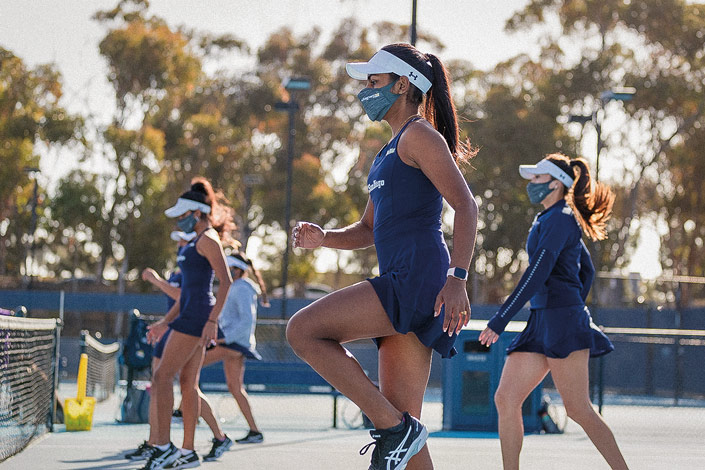
Our sports run from the early fall through the end of spring — we are one of the destination sites for the San Diego community to enjoy on a yearlong basis. And with facilities such as LionTree Arena (formerly RIMAC Arena) for sports such as basketball, volleyball and fencing, it signals to everyone that Athletics is in this Division I game for real. We’re going to be big players in the game, and we have a significant economic and entertainment impact on the greater San Diego community.
What do athletics do for UC San Diego?
I want people to think about athletics as more than games and competition. Why? For the 600 or so athletes that are part of our program, athletics is the laboratory for personal development for those individuals — things such as time management, setting goals, working hard, being part of a team and learning how to deal with victory, defeat and adversity. And that’s just through the sports competition side
We also work with athletes in terms of leadership skills. We work on mental skills and development to make our athletes as strong as they can be in that area. We work on career development. And beyond that, we’re probably the only university staff that are engaged with our students on a regular basis for a two- to five-year period. It’s not transactional, it’s not based on academic quarter — it’s a very different engagement of students on campus.
Tell me about our student fans.
Before we became Division I, we might have had 100 or 150 students attend games from the Triton Tide, student supporters of Athletics. Now we have thousands of students who are part of that group, and we are seeing tremendous support at athletic events. I’m so happy about that.
I really feel that athletics creates a healthy balance to the academic rigors that we have here at UC San Diego — for our scholar-athletes and our students across the whole campus. When you have that balance, you will actually be more successful from an academic standpoint. Bringing a social element to the student experience brings a big smile to my face.
This article originally appeared in the spring 2024 issue of UC San Diego Magazine as “Our Time to Shine.”
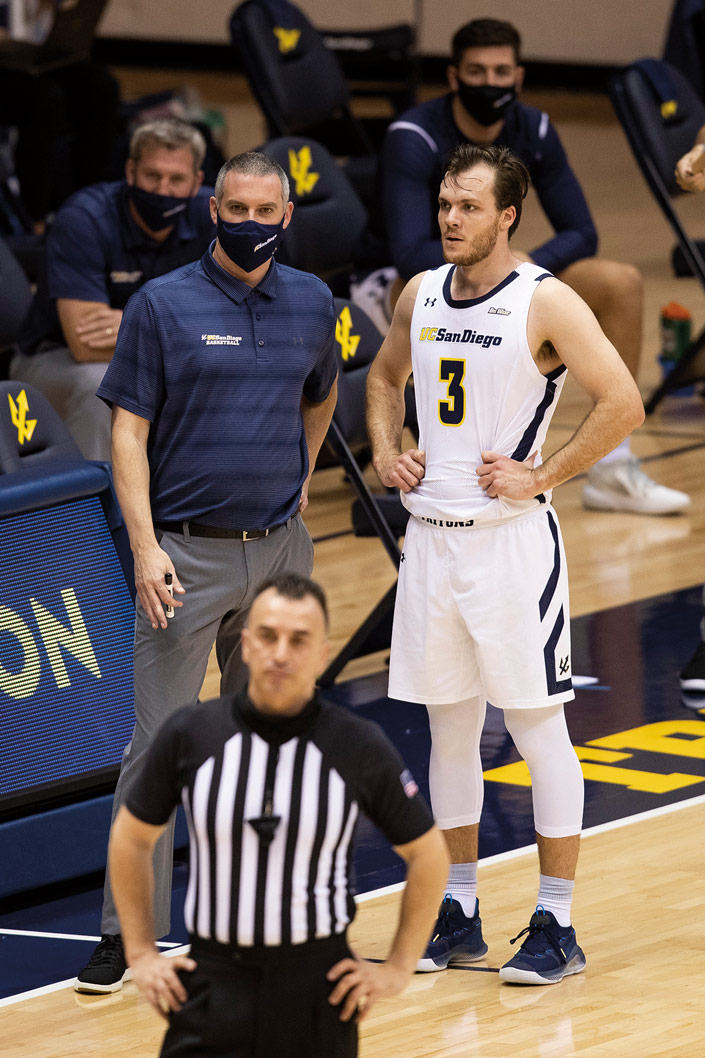
Share This:
You May Also Like
Stay in the Know
Keep up with all the latest from UC San Diego. Subscribe to the newsletter today.


